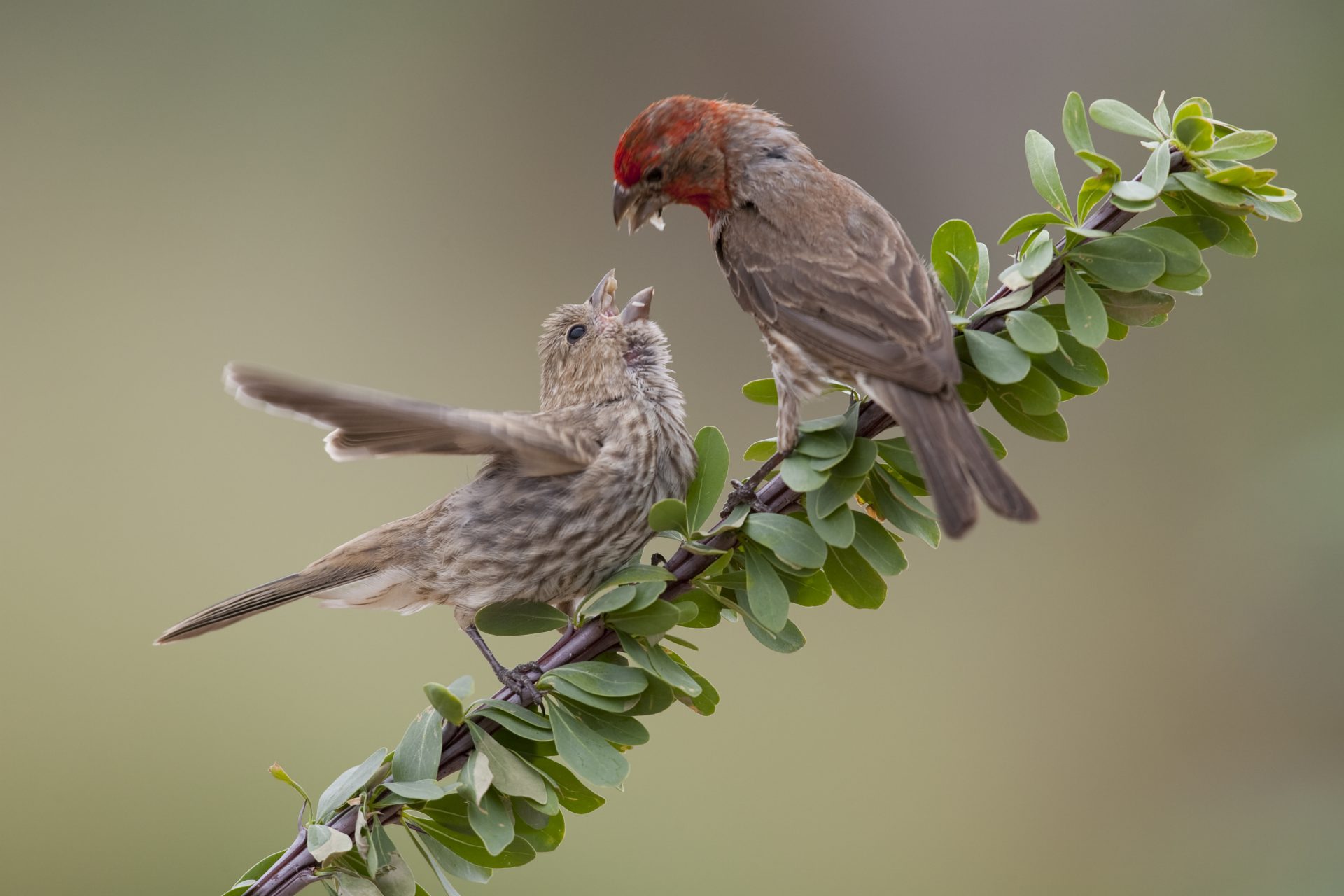
-
- If you catch any glimpses of red, then you can be fairly sure you’ve just seen a House Finch. The males of this species have red faces, breasts, and rumps. By contrast, House Sparrow males have gray heads, whitish cheeks, and a black bib under the chin.

- If you’re not used to distinguishing between color patterns, one of the biggest differences between House Finches and House Sparrows is their beaks. House Finches have large, thick beaks of a grayish color. House Sparrows have a much more conical bill that is smaller than finches’, and the bill is black or yellow, depending on the bird’s gender and breeding stage.
- House Sparrows’ color pattern is generally darker than that of House Finches, with deeper browns and more black in the back and wings. Both male and female House Finches have significant brown streaking on their flanks and belly compared to House Sparrows and other similar finch species like the Purple Finch or Cassin’s Finch.
Again, don’t forget that with these two species, one of the key identifiers is location, location, location! If you want to solidify your sparrow identification skills, check out this guide.
